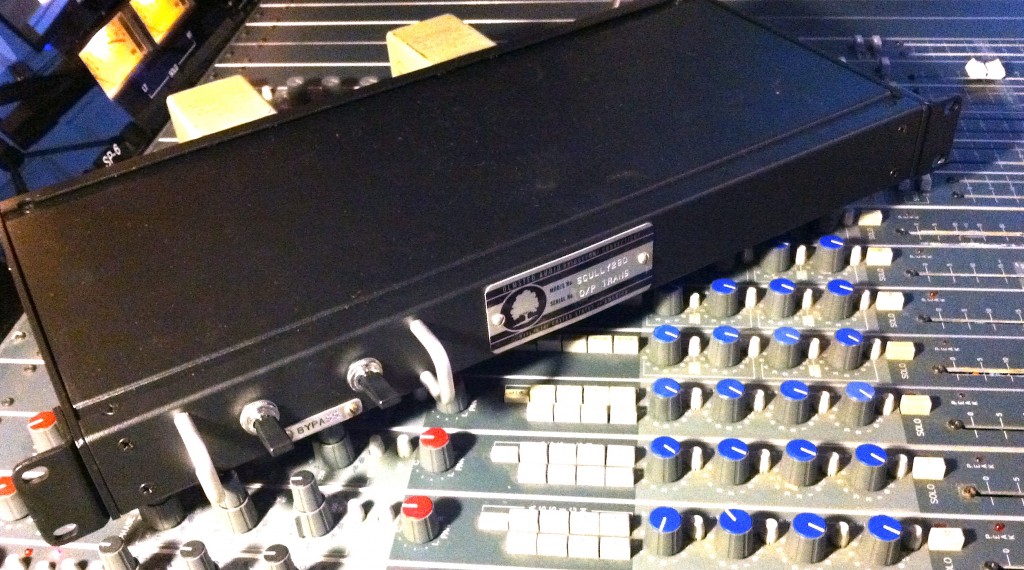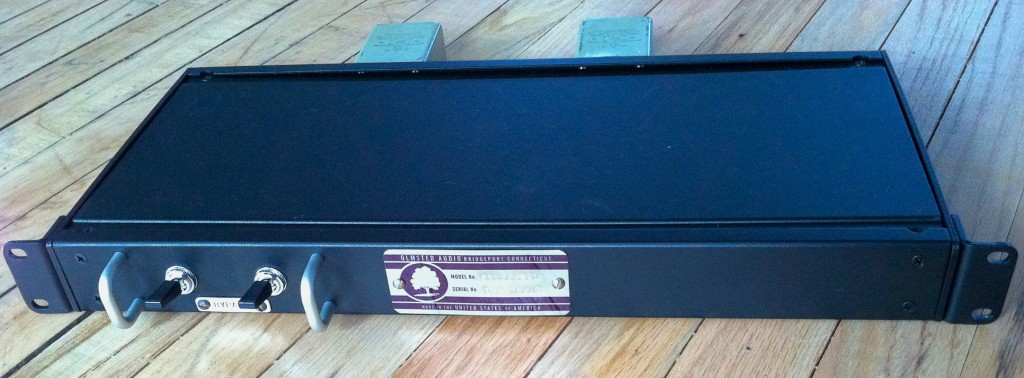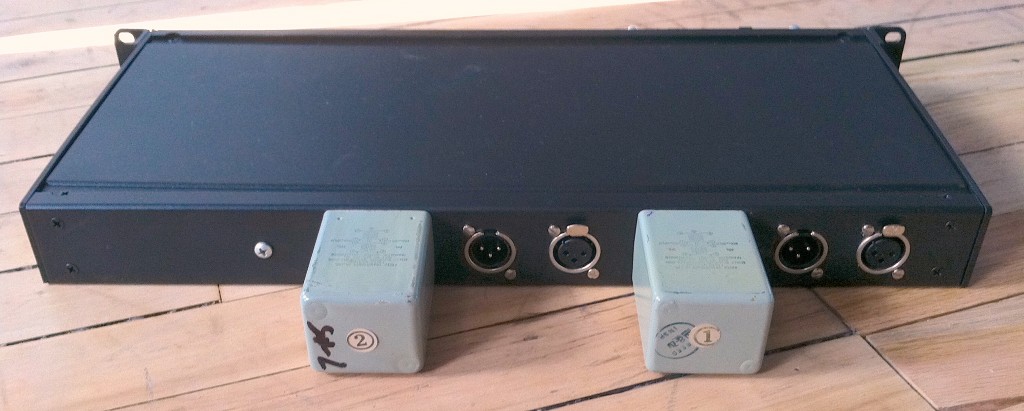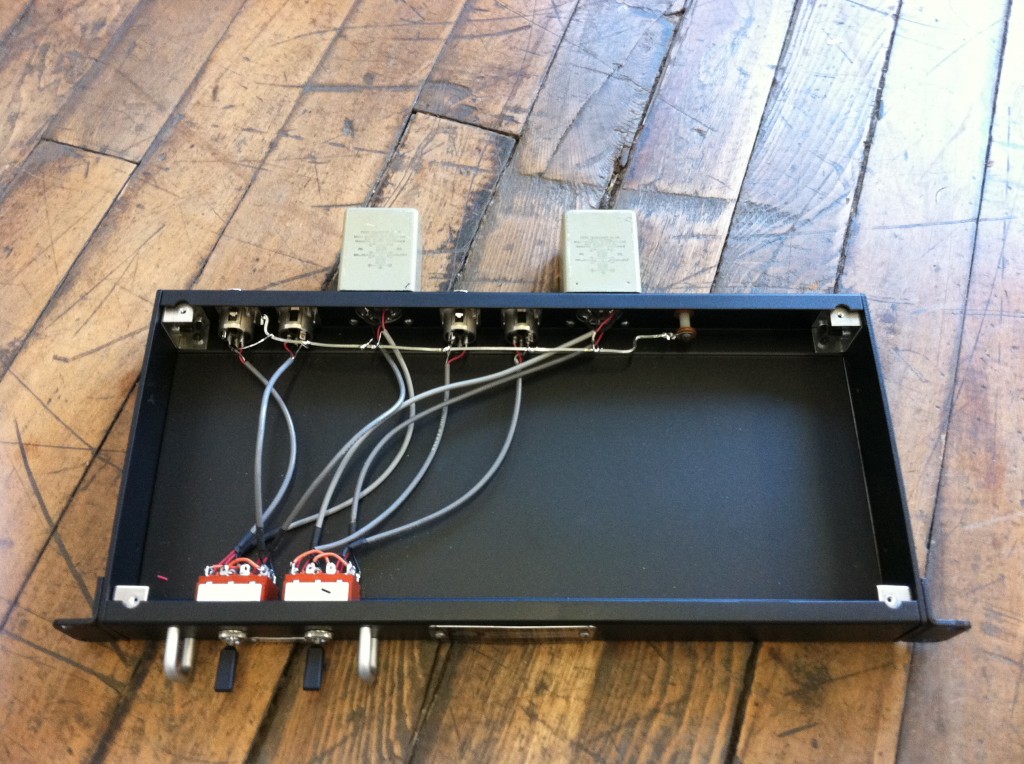 Sometime in the past couple of years, Tape Op ran a short piece by Allen Farmelo titled “Using Transformers to Transform Audio.” (EDITOR: the original Farmelo article is no longer available as far as we can determine – link removed) My reaction at the time was ‘it’s about time!’ Audio transformers are a crucial part of what we think of as an ‘old-school’ or ‘vintage’ sound. My clients at the studio often ask me what makes tube-audio gear desirable, or ‘better,’ and I am always quick to relate that when vacuum tubes are operating in a linear (IE., not-distorting) way, you shouldn’t really ‘hear’ the tube – it should be amplifying, nothing more, nothing less. Of course once you push a tube into breakup the effect can be quite different than a distorted FET or transistor but you get the idea. A clean tube signal should sound… clean! So, anyhow, the next point that I will make is that tubes are rarely very far from audio transformers, at least in pro-audio equipment, owing to the usefulness of ‘free-gain’ at input stages and the necessity of plate-or-cathode-matching at output stages (if this sounds like jargon to you/// basically/// tubes need transformers in order to play-nice with other pieces of gear). The point: what we think of as ‘that tube equipment sound’ is really due to the transformers as much as the tubes themselves.
Sometime in the past couple of years, Tape Op ran a short piece by Allen Farmelo titled “Using Transformers to Transform Audio.” (EDITOR: the original Farmelo article is no longer available as far as we can determine – link removed) My reaction at the time was ‘it’s about time!’ Audio transformers are a crucial part of what we think of as an ‘old-school’ or ‘vintage’ sound. My clients at the studio often ask me what makes tube-audio gear desirable, or ‘better,’ and I am always quick to relate that when vacuum tubes are operating in a linear (IE., not-distorting) way, you shouldn’t really ‘hear’ the tube – it should be amplifying, nothing more, nothing less. Of course once you push a tube into breakup the effect can be quite different than a distorted FET or transistor but you get the idea. A clean tube signal should sound… clean! So, anyhow, the next point that I will make is that tubes are rarely very far from audio transformers, at least in pro-audio equipment, owing to the usefulness of ‘free-gain’ at input stages and the necessity of plate-or-cathode-matching at output stages (if this sounds like jargon to you/// basically/// tubes need transformers in order to play-nice with other pieces of gear). The point: what we think of as ‘that tube equipment sound’ is really due to the transformers as much as the tubes themselves.
I won’t go into all the various effects that transformers create, as Farmelo does a very good job of explaining it in his piece. Suffice to say: it is a very real, and very subtle effect. Audio is a game of inches, though, ain’t it. So when a regular customer of mine recently ordered a custom piece to allow him to use some high-quality transformers as a subtle signal processor in his studio, I was ready to go. Here’s what I whipped up:
 A single-rackspace unit – two 4PDT toggle switches on the front offer clickless true-bypass for each channel. The switches are beautiful Japanese made units; each can handle 12,000 (yes twelve thousand) watts of electricity. They should last…
A single-rackspace unit – two 4PDT toggle switches on the front offer clickless true-bypass for each channel. The switches are beautiful Japanese made units; each can handle 12,000 (yes twelve thousand) watts of electricity. They should last…
 On the rear we see Neutrik XLRs (my price/performance favorite) and… a pair of 600:600 FREED output transformers pulled from some Scully 280 electronics that were too far gone to rebuild. The transformers themselves are flawless, though, and they sound great; I have many of them at use in my own studio for various tasks.
On the rear we see Neutrik XLRs (my price/performance favorite) and… a pair of 600:600 FREED output transformers pulled from some Scully 280 electronics that were too far gone to rebuild. The transformers themselves are flawless, though, and they sound great; I have many of them at use in my own studio for various tasks.
 Inside it’s just a buncha wire… Belden 9451… and at the rear you can see the heavy copper ground buss with a single chassis-contact point on the left.
Inside it’s just a buncha wire… Belden 9451… and at the rear you can see the heavy copper ground buss with a single chassis-contact point on the left.
Overall the transformers introduce a 1db loss in level to the program. The effect is certainly subtle at reasonable levels, but I notice a more ‘organized’ sound to the extreme low end – it seems less vague while still retaining the full extension in the subwoofer.
7 replies on “Audio Transformer As Signal Processor”
This is quite common among audiophiles in Korea. They like to run the output of CD players through various transformers. They put them on boxes with connectors.
So that’s where the WECo 111C repeat coils and UTC LS-series went?
Yes, that’s where they went. If you had vintage audio for sale between 1998 and 2004, almost all of it went to Korea. As one example, I had for sale a dozen LS-30’s new in the box, and Koreans bought them all. While always the highest bidders, consider also that they pay 100% duty on top of that.
All that money from cheap Kias had to go somewhere, and inasmuch as YOU pay their defense bills-which are huge-audio is what they turned to. The Japanese were very upset because they could not match those prices.
You are inversely wiring transformers and wiring them in series in your signal path in order to “color” the tone based on each xfmrs tonal characteristics?
Is this correct:
Signal > primary 1 > secondary 1> secondary 2 > primary 2 > output
No this is wrong icorn. It goes: signal>(true bypass 4pdt switch)>primary>secondary> (true bypass 4pdt switch)> output. The unit u see on the site is prolly stereo.
how much is it to have it build a stereo unit like this?